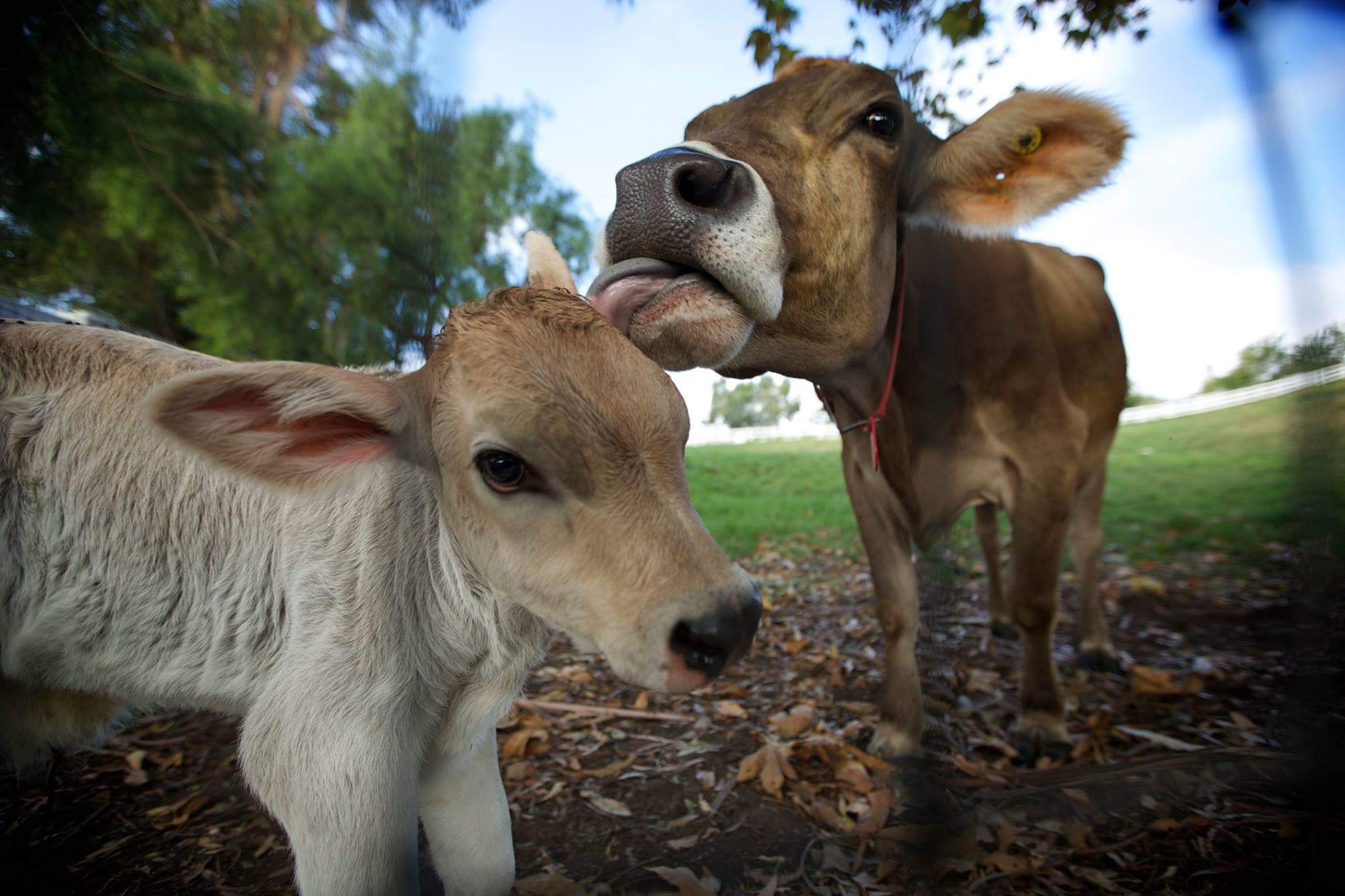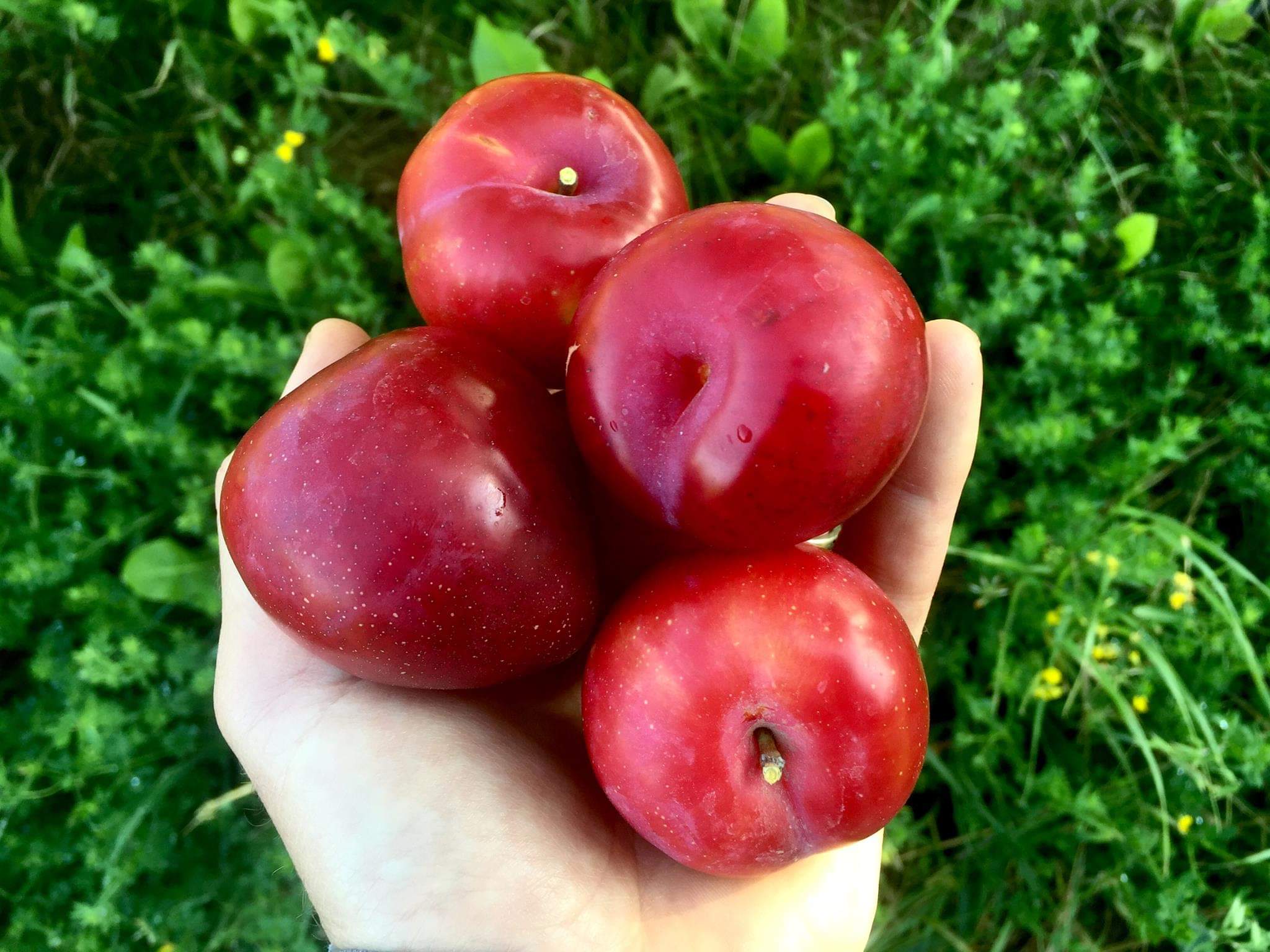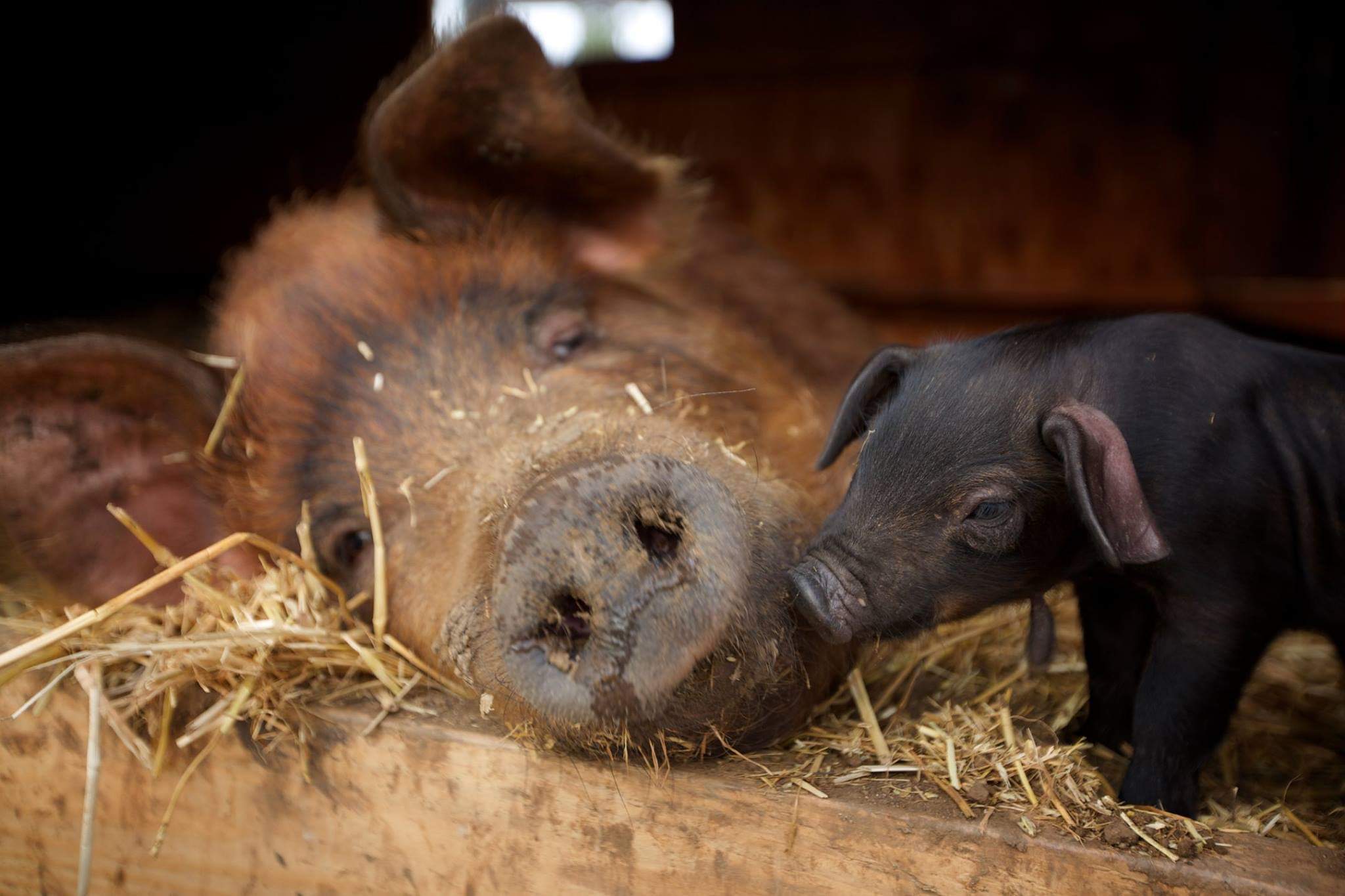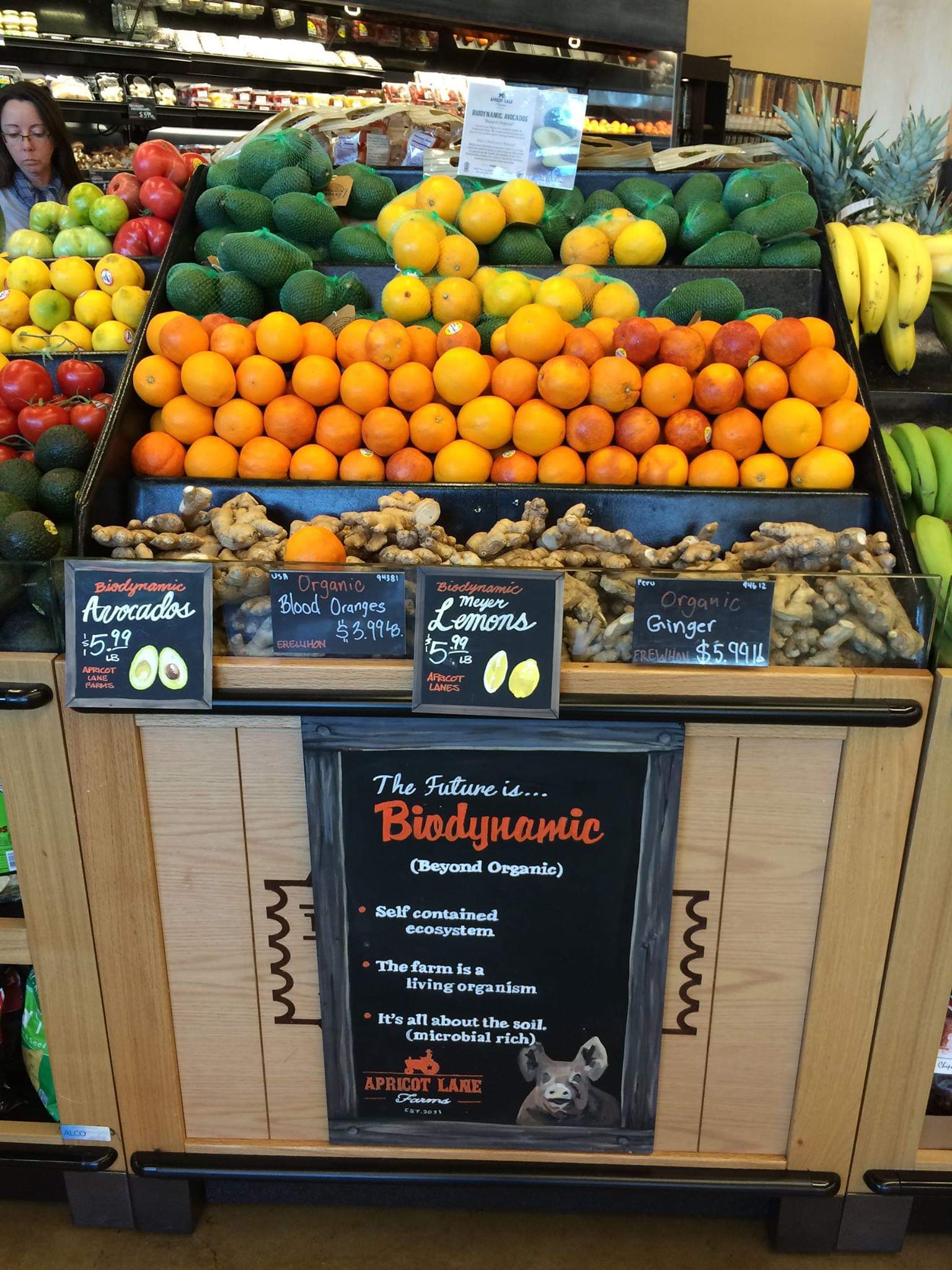
In partnership with The Biggest Little Farm x Cinemien
- Sustainable Planet -
- 9mins -
- 4,877 views
‘The Biggest Little Farm’ couple transformed totally depleted land into a regenerative farm in 8 years
John and Molly Chester, the couple behind the ‘The Biggest Little Farm’, have successfully transformed their depleted land into a thriving, regenerative farm in just 8 years through their innovative and sustainable farming practices.
Click on the video above to watch the exclusive interview we’ve had with Apricot Farm co-founder and movie director John Chester.
Their Apricot Lane Farms is a micro-ecosystem managed through regenerative agriculture and ‘biomimicry’, an approach that seeks sustainable solutions to farming challenges by emulating nature’s time-tested patterns and strategies.
Apricot Lane Farms: A Traditional Foods Farm Feeding The Community
Molly and John Chester left their tiny Los Angeles apartment to live their dream, and bought 200 acres in the foothills of Ventura County, California. Using regenerative agriculture and ‘biomimicry’, they work to feed their local community; a goal they believe should be the job of every farmer that grows food. They documented their challenging yet amazingly rewarding 8-year-long journey into a wonderful movie, The Biggest Little Farm.

Apricot Lane Farms has become a traditional foods farm and an example of what can be achieved John and Molly Chester, a husband and wife team, left their job titles of ‘documentary filmmaker’ and ‘private chef’ to become farmers and pursue their dream vision of starting Apricot Lane Farms in 2011. For dozens of truly wonderful photos of the farm and animals, click the highlighted link ? Source: CLICK HERE FOR PHOTO GALLERY
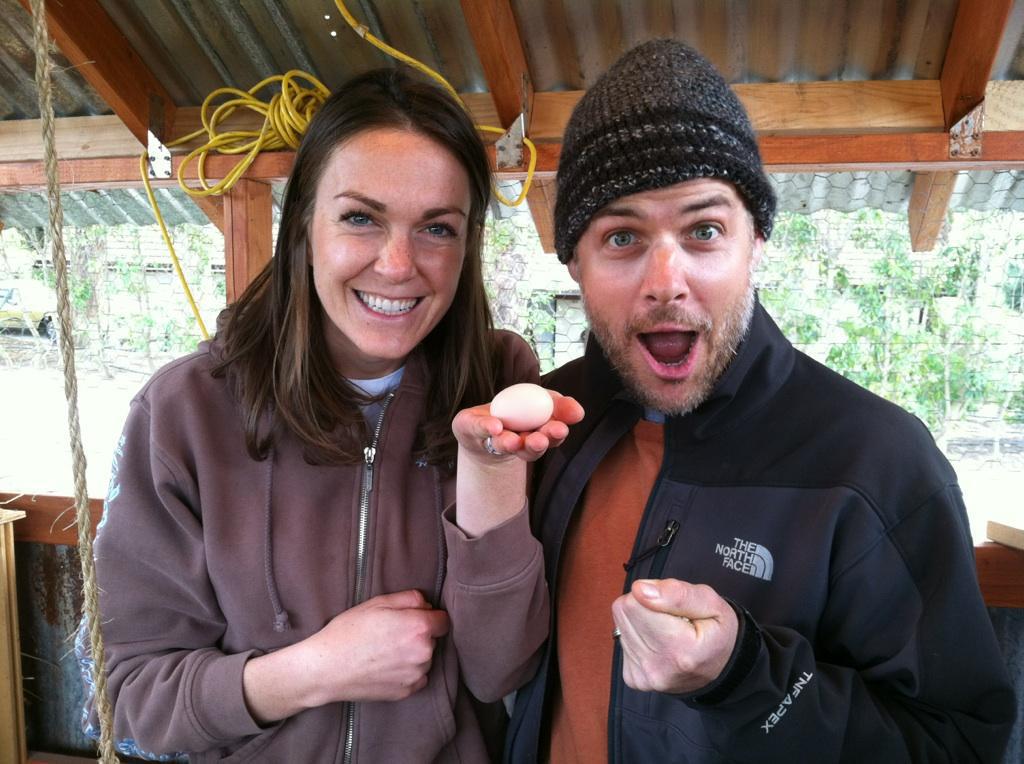
This couple transformed depleted farmland into a regenerative oasis
While they are the first to admit everything is not perfect, farmers Molly and John Chester strive everyday to do the following;
1) Grow great tasting and nutrient-dense foods.
2) Only use farming practices that, over time, reduce outside inputs and focus on the enhancement of the environment, wildlife habitat, and biological regeneration of soil.
3) Treat the farm team with respect and care for them as family, pay them a fair wage and nurture a safe and chemical-free working environment.
4) Treat the animals humanely and ensure they live on healthy lush pastures in a stress-free and biologically diverse ecosystem. Care for them in a clean way that never requires the use of antibiotics.
5) Allow farming decisions to be made through the lens of biomimicry*. As their understanding of the ecosystem evolves, work to implement the new wisdom into their practices.
It wasn’t an easy task, but well worth the time. It took the couple nearly 4 years to achieve Organic and Biodynamic certification for the orchards, gardens, and pastures. Each day they work to go beyond the certification requirements to better stabilise this biologically diverse ecosystem.
*Biomimicry in farming is an approach that seeks sustainable solutions to farming challenges by emulating nature’s time-tested patterns and strategies. The Chesters study the interconnected patterns and relationships between plants and insects. They then focus on balancing the imbalances that would normally cause farmers to use chemicals on plants or drugs in their animals by implementing missing biological and native components to the ecosystem (i.e. plants, insects, or other animals). They are currently participating in several university studies that are observing the effectiveness of their methods.
Source: ApricotLaneFarms.com
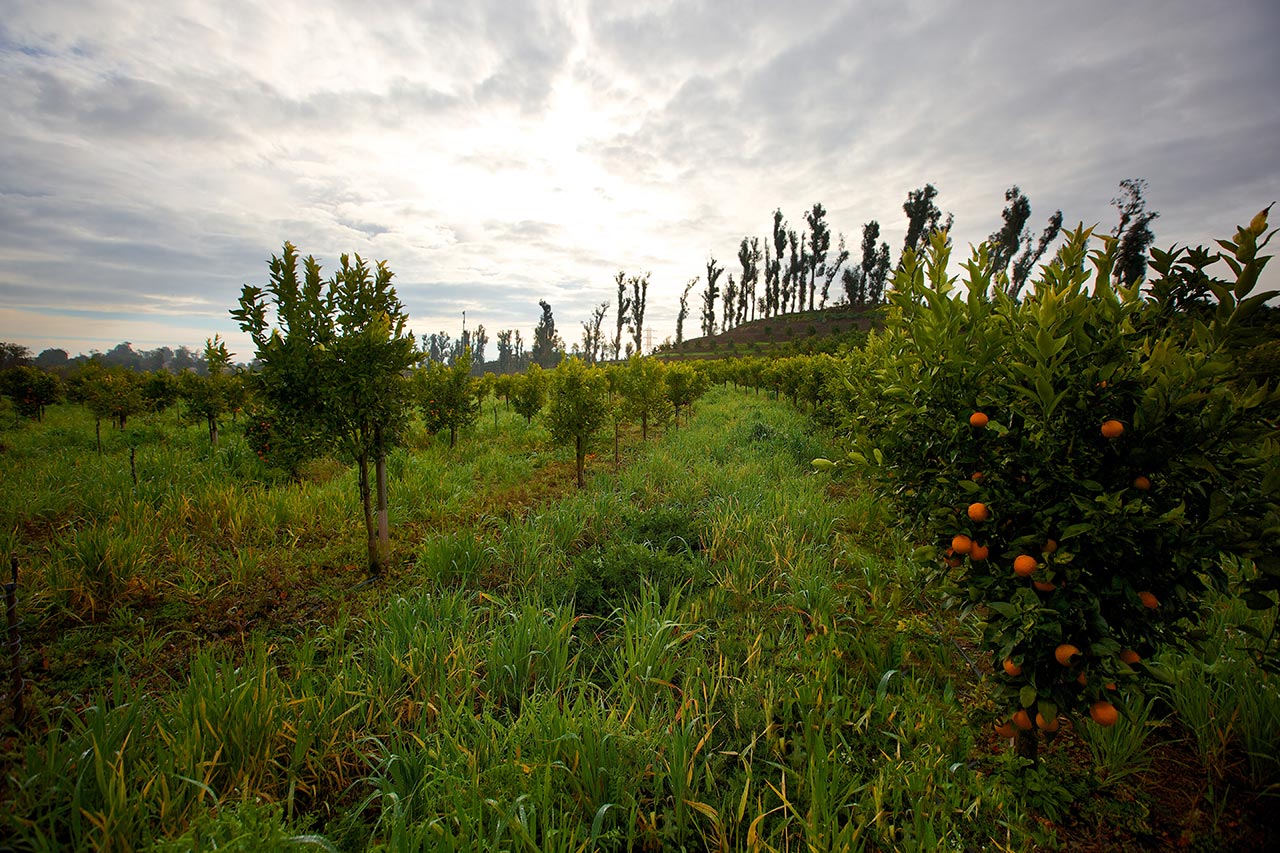
Soil Health You hear this a lot now, “Soil is our most important asset” and well… it isn’t just talk on this farm! Focusing on the health of the soil enables the health of everything else, including the crops, animals, and people. Source: ApricotLaneFarms.com
Soil Health, Carbon Sequestration and Cover Cropping
Soil Health
Regenerative soil practices such as compost teas; manure compost; beneficial plants and insects; a diverse cover crop of grasses, legumes, and weeds; all combined lends to a healthier eco-system from which nutrient-dense food can grow.
As an added bonus, this method of keeping the soils covered with grasses sequesters carbon directly out of the atmosphere and puts it back into the Earth. (See Carbon Sequestration). They say they have less disease in their crops and more nutrients available for the trees and plants. “We can’t take credit for this ingenious method, we’re just imitating nature’s finest flywheel system, the ecosystem.”
Carbon Sequestration and Cover Cropping
Simply planting a diverse mix of grasses not only helps the farm’s soil and ecosystem but also helps aid in the long-term storage of atmospheric carbon dioxide (CO2). This process is better known as Carbon Sequestration, which is the long-term storage of carbon dioxide or other forms of carbon to either mitigate or defer global warming and avoid dangerous climate change. It has been proposed as a way to slow the atmospheric and marine accumulation of greenhouse gases. This model is now being promoted around the world as an important tool in the fight against climate change.
Source: ApricotLaneFarms.com
The Fertility Center, good bacteria and vermicompost
If the Chesters want their plants to rely on the soil for nutrients and not entirely on outside inputs, then they must have soil with loads of microbes (good bacteria) to help break down organic matter (dead grass, roots, bugs, leaves) and turn it into nutrients that feed the plants.
The Fertility Center’s purpose is to enhance that process. The full-scale vermicomposting operation (or worm poop composting) uses microbe-rich cow manure from the pasture, which is placed in aerated bins to kill off bad pathogens and partially decompose.
They then mix this manure with juicing scraps and feed it to 500,000 plus worms living in a 40-foot long bin. The worms eat their way through the material and as it is processed through their digestive tract, the bacteria diversity is enhanced creating vermicompost.
These worm castings are either used in their solid form around the farm or placed into a Compost Tea Brewer to, yet again, increase microbial counts. Finally, this extremely fertile material is irrigated onto the soil.
Source: ApricotLaneFarms.com
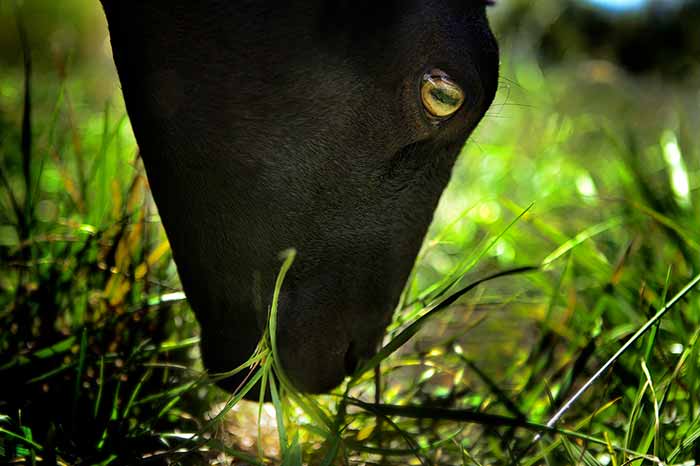
Managed Intensive Grazing At Apricot Lane Farms they mimic a predator-prey relationship by keeping the animals on the move as to not overgraze the lands. Source: ApricotLaneFarms.com
Managed Intensive Grazing
The health of the soil, pastures, orchards and animals all depend on the consistent and planned movement of the animals. In nature, animals do not stay in one spot as a precautionary measure to avoid predators.
At Apricot Lane Farms they mimic a predator-prey relationship by keeping the animals on the move as to not overgraze the lands. Using a combination of methods that include managed intensive grazing and rotational grazing, they do not overgraze the lands and they properly rest and restore the pastures.
The sheep, cows, and chickens follow each other through sections of pasture, grazing on lush grass and fertilising the land. Then, they are quickly moved off to greener pastures. They eat down 1/3 of the grass, trample 1/3, and leave 1/3 behind.
This enhances grass re-growth, prevents overgrazing of their favourite grasses and finally, the trampling of the grasses feeds the earth worms and microbes while slowly converting it to the precious humus that ultimately creates the top soil.
Source: ApricotLaneFarms.com
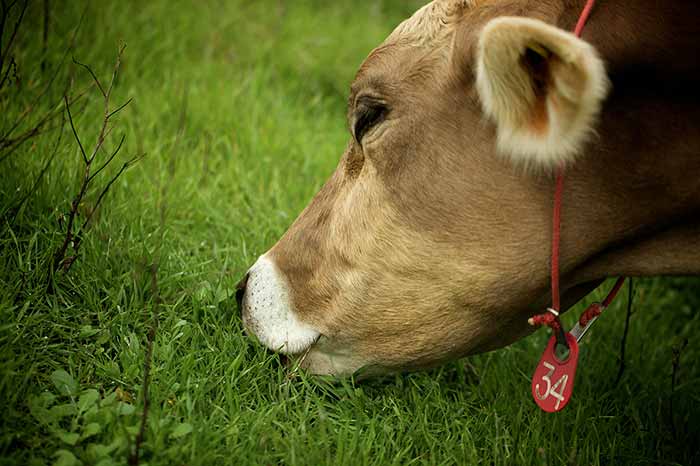
Animal Health Using preemptive health methods, the Chesters have never had to rely on the use of antibiotics and chemical de-wormers for their animals and they have never used any type of growth hormone. Source: ApricotLaneFarms.com
Animal Health & Apricot Lane Farms Meat
‘We treat our animals humanely and with the upmost respect. First they eat grass, leaves and weeds just as nature intended. We move them to new pastures often and in a calm, stress-free manner. They are provided with protection from predators by the loving and loyal livestock guardian dog team.
‘Using preemptive health methods, we have never had to rely on the use of antibiotics and chemical de-wormers for our animals. We have never used any type of growth hormone. Through the proper rest of pastures, balance of copper in their diet, free choice Diatomaceous Earth and a bit of fermented apple cider vinegar in their water, we help buffer our livestock from common illnesses found on conventional farms.
‘It’s not easy to do this but we have seen the benefits and over time we have developed a very hardy, healthy line of Dorper sheep, Scottish Highland cattle and Red Wattle pig. All of this care translates into healthier food.
‘Our meat is soy-free and comes from humanely treated animals that live out in the sunshine and are free to roam. They are never given hormones or antibiotics. Traditional cultures valued the fat of animals almost more than the meat, and we harken back to tradition and focus on producing a high-quality fat in our animals. Chefs from all over the country seek out our meat for its flavor and fat quality.’
Source: ApricotLaneFarms.com
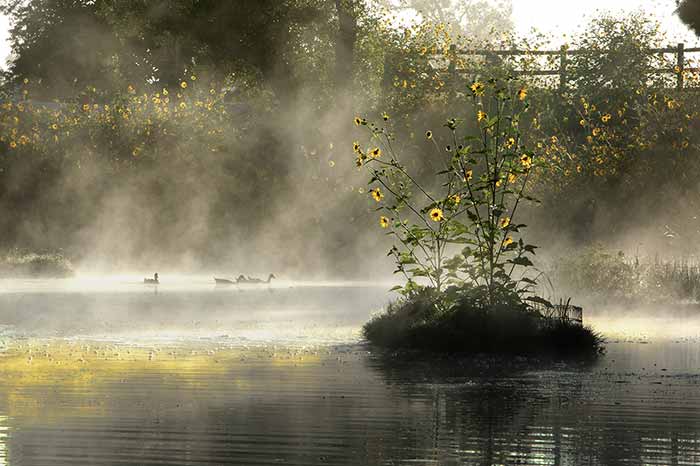
The farm’s pond is the largest privately-owned native restoration project in Ventura County Native species trees, grasses, and forbs surround the pond to create a habitat for birds, pollinators, and predator insects. The specially developed floating, plant-filled islands with their roots dangling in the water below pull the nitrogen and phosphorous out of the water and use it as food. Many wild native birds now call the pond home. Source: ApricotLaneFarms.com
Apricot Lane Farms Pond and Bees
The Pond
The farm’s pond is the largest privately-owned native restoration project in Ventura County, CA. Native species trees, grasses, and forbs surround the pond to create a habitat for birds, pollinators, and predator insects.
The specially developed floating, plant-filled islands with their roots dangling in the water below pull the nitrogen and phosphorous out of the water and use it as food. Many wild native birds, including Night Herons, Egrets, Coots, and Mallard Ducks have discovered this haven and now call the pond home.
The Chesters plant hundreds of native milkweed around the pond every year, which feeds the monarch butterfly. Each year their numbers have grown. The Monarch is known to scientists as a sign of a healthy ecosystem.
The Bees
The farm get bees from rescued hives that would otherwise be destroyed by an exterminator. Since 2013, Kirk Anderson and Walker Rollins, Rescue Beekeepers, have been re-homing these native feral hives to the farm. Here they manage the bees the same way they do everything else, without any chemicals or conventional medicines. They collect some of the honey and pollen from the 30 plus hives use it in the farm’s range of products.
From the over 75 varieties of Biodynamic certified fruit grown, they produce product lines of marmalades, fruit butters, fruit leathers, hot sauces, and more.
Source: ApricotLaneFarms.com
The Biggest Little Farm: The Movie
The Biggest Little Farm follows two dreamers and their beloved dog when they make a choice that takes them out of their tiny L.A. apartment and into the countryside to build one of the most diverse farms of its kind in complete coexistence with nature.
The film chronicles their near decade-long attempt to create the utopia they seek, planting 10,000 orchard trees, hundreds of crops, and bringing in animals of every kind– including an unforgettable pig named Emma and her best friend, Greasy the rooster. When the farm’s ecosystem finally begins to reawaken, their plan to create perfect harmony takes a series of wild turns, and to survive they realise they’ll have to reach a far greater understanding of the intricacies and wisdom of nature, and of life itself.
Check out the official trailer below. Check out Apricot Lane Farms website, find out more about the movie, or follow the farm on Facebook, Instagram and Twitter.
” caption=”The Biggest Little Farm follows two dreamers and their beloved dog when they make a choice that takes them out of their tiny L.A. apartment and into the countryside to build one of the most diverse farms of its kind in complete coexistence with nature.” source=”YouTube/Neon” sourceUrl=”https://m.youtube.com/watch?v=UfDTM4JxHl8″]
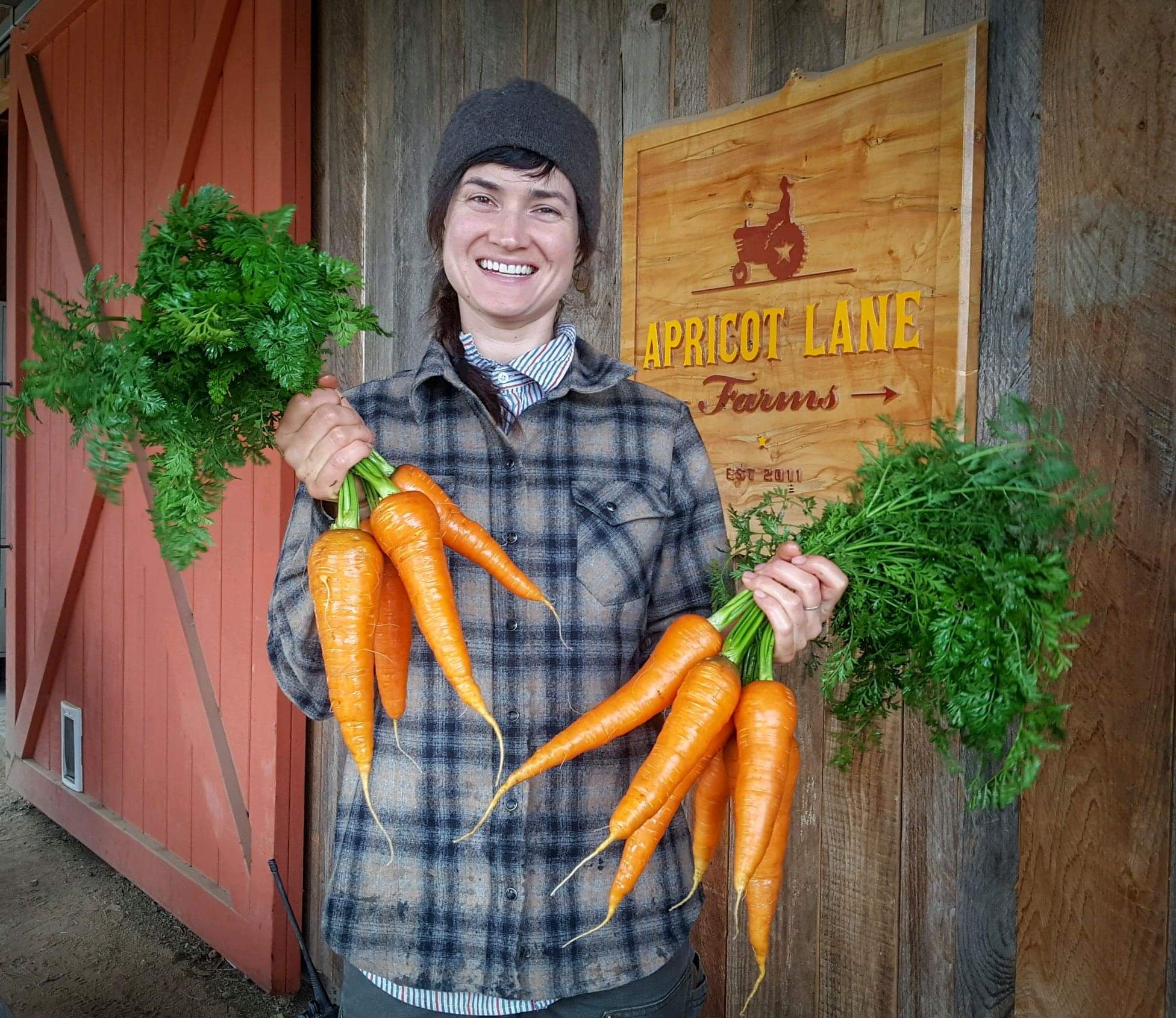
Source: Facebook/ApricotLaneFarms

Source: Facebook/ApricotLaneFarms
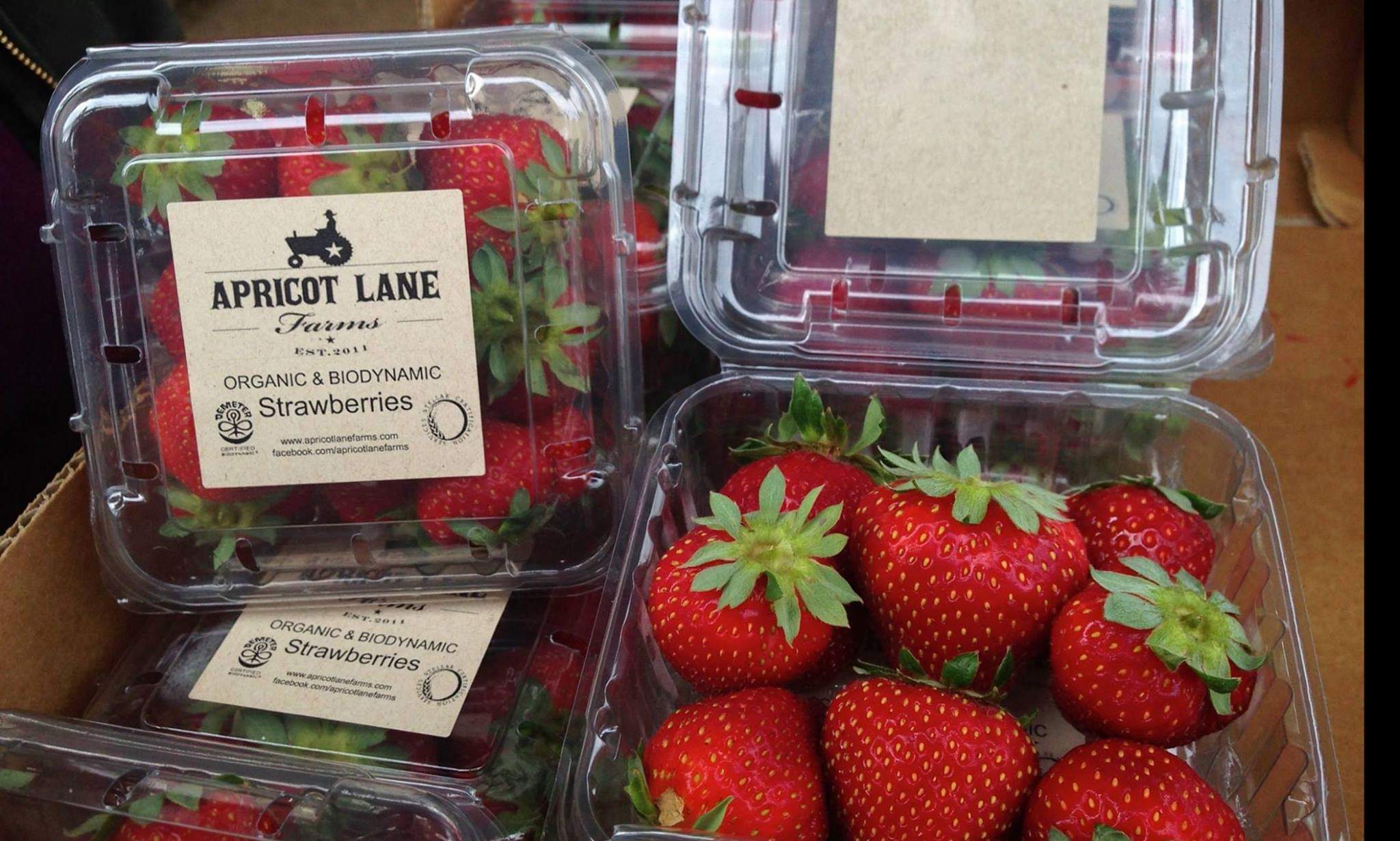
Source: Facebook/ApricotLaneFarms
